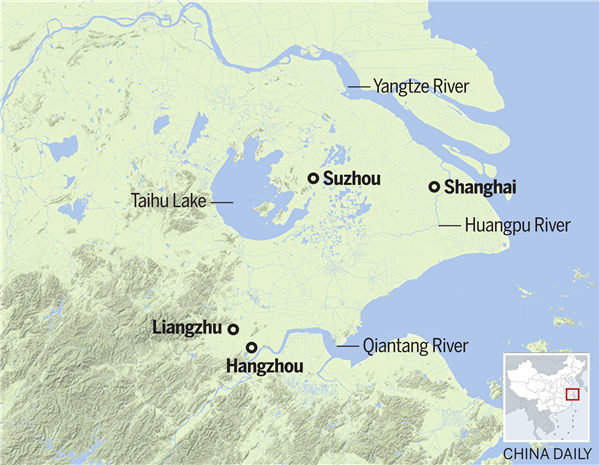

"Liangzhu people chose to build their city in a basin surrounded on three sides (north, west and south) by the mountains, with only one side open to the alluvial plains and the funnel-shaped Hangzhou Bay to its east," says Zhou. "The mountains are believed to have contained deposits of jade, whose depletion toward the end of the Liangzhu civilization may have been seen as an omen."
According to Fang, although cong pieces are still found in late phase of Liangzhu tombs, sometimes even in larger numbers within a single pit, they were often made either with low-quality jade or a replacement, such as serpentine.
Having tried very hard to read between the carved lines, Fang believes that he has made inroads into the minds of those who created the man-and-beast image with unmistakable intention, clarity and uniformity.
"Look at the way it replicates itself within one single item," he says, pointing to an ivory scepter showcased at the Shanghai exhibition, across the surface of which 10 of the motif are arranged as if engaged in a heavenward spiral.
"It could be a sun god, which many cultures from East to West have depicted as simultaneously having multiple incarnations, thanks to the deity's daily ride across the sky," Fang continues.
"But they are more likely to be ancestral deities — the fathers, grandfathers and great-grandfathers from whom the men and women of Liangzhu descended, and with whom they would eventually join."